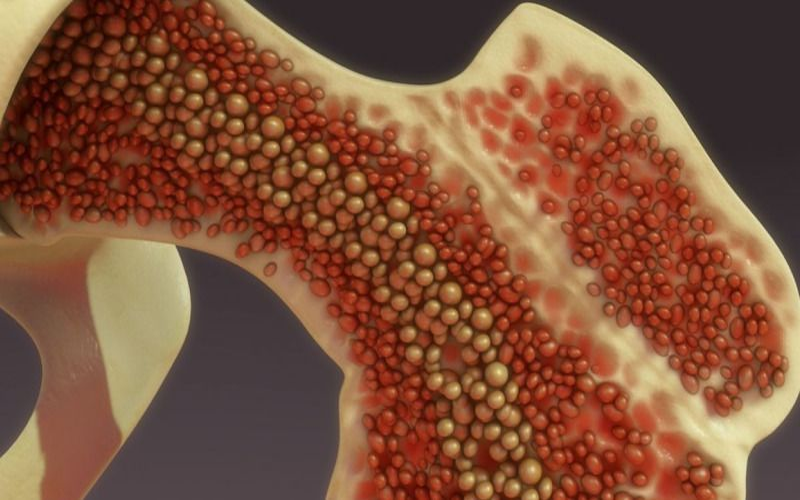Myelodysplastic Syndrome
Myelodysplastic Syndrome Overview
Myelodysplastic syndromes are a group of disorders caused by poorly formed blood cells or ones that don't work properly. Myelodysplastic syndromes result from something amiss in the spongy material inside your bones where blood cells are made (bone marrow).
Treatment for myelodysplastic syndromes usually focuses on reducing or preventing complications of the disease and its treatments. In some cases, treatment might involve chemotherapy or a bone marrow transplant.

Myelodysplastic Syndrome Symtoms
Myelodysplastic syndromes rarely cause signs or symptoms in the early stages.
In time, myelodysplastic syndromes might cause:
- Fatigue
- Shortness of breath
- Unusual paleness (pallor) which occurs due to a low red blood cell count (anemia)
- Easy or unusual bruising or bleeding which occurs due to a low blood platelet count (thrombocytopenia)
- Pinpoint-sized red spots just beneath your skin caused by bleeding (petechiae)
- Frequent infections which occurs due to a low white blood cell count (leukopenia)
When to see a doctor?
Make an appointment with your doctor if you have signs or symptoms that worry you.
Myelodysplastic Syndrome Causes
In a healthy person, bone marrow makes new, immature blood cells that mature over time. Myelodysplastic syndromes occur when something disrupts this process so that the blood cells don't mature.
Instead of developing normally, the blood cells die in the bone marrow or just after entering the bloodstream. Over time, there are more immature, defective cells than healthy ones, leading to problems such as fatigue caused by anemia, infections caused by leukopenia, and bleeding caused by thrombocytopenia.
Some myelodysplastic syndromes have no known cause. Others are caused by exposure to cancer treatments, such as chemotherapy and radiation, or to toxic chemicals, such as tobacco, benzene and pesticides, or to heavy metals, such as lead.
Types of Myelodysplastic Syndrome
The World Health Organization divides myelodysplastic syndromes into subtypes based on the type of blood cells — red cells, white cells and platelets — involved.
Myelodysplastic syndrome subtypes include:
- Myelodysplastic syndrome with unilineage dysplasia. One blood cell type —white blood cells, red blood cells or platelets — is low in number and appears abnormal under the microscope.
- Myelodysplastic syndrome with multilineage dysplasia. In this syndrome, two or three blood cell types are abnormal.
- Myelodysplastic syndrome with ring sideroblasts. This type, which has two subtypes, involves a low number of one or more blood cell types. A characteristic feature is that existing red blood cells in the bone marrow contain a ring of excess iron called ring sideroblasts.
- Myelodysplastic syndrome associated with isolated del chromosome abnormality. People with this syndrome have low numbers of red blood cells, and the cells have a specific mutation in their DNA.
- Myelodysplastic syndrome with excess blasts — types 1 and 2. In both these syndromes, any of the three types of blood cells — red blood cells, white blood cells or platelets — might be low and appear abnormal under a microscope. Very immature blood cells (blasts) are found in the blood and bone marrow.
- Myelodysplastic syndrome, unclassifiable. In this uncommon syndrome, there are reduced numbers of one of the three types of mature blood cells, and either the white blood cells or platelets look abnormal under a microscope.
Risk Factors of Myelodysplastic Syndrome
Factors that can increase your risk of myelodysplastic syndromes include:
- Older age. Most people with myelodysplastic syndromes are older than 60.
- Treatment with chemotherapy or radiation. Chemotherapy or radiation therapy, both of which are commonly used to treat cancer, can increase your risk of myelodysplastic syndromes.
- Exposure to certain chemicals. Chemicals linked to myelodysplastic syndromes include tobacco smoke, pesticides and industrial chemicals, such as benzene.
- Exposure to heavy metals. Heavy metals linked to myelodysplastic syndromes include lead and mercury.
Complications of Myelodysplastic Syndrome
Complications of myelodysplastic syndromes include:
- Anemia. Reduced numbers of red blood cells can cause anemia, which can make you feel tired.
- Recurrent infections. Having too few white blood cells increases your risk of serious infections.
- Bleeding that won't stop. Lacking platelets in your blood to stop bleeding can lead to excessive bleeding.
- Increased risk of cancer. Some people with myelodysplastic syndromes might eventually develop a cancer of the blood cells (leukemia).
If you Have Any Queries, Call Us On
+91-8193809030
